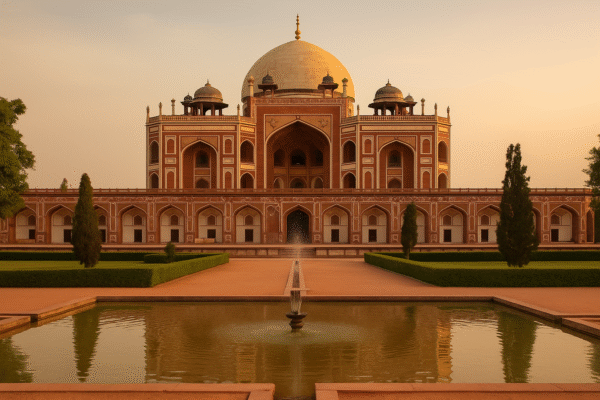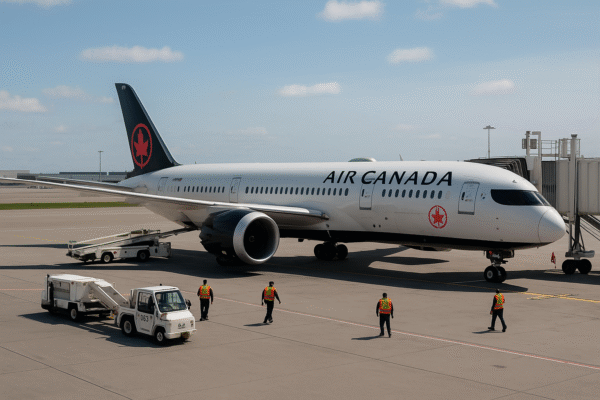Dida Unlocks the Tourism Potential of China’s 618 Shopping Festival: A Missed Opportunity for Global Destinations
As the curtain falls on another record-breaking edition of China’s 618 Shopping Festival, Dida, a leading B2B travel distribution platform based in Singapore, is calling on the global tourism industry to reimagine how it engages with Chinese consumers. Traditionally associated with retail and e-commerce, the mid-year 618 shopping event is rapidly emerging as a strategic touchpoint for travel marketers looking to capture early interest in Chinese outbound travel.
Held annually on June 18, the 618 Shopping Festival—second in scale only to Singles’ Day—has evolved far beyond its JD.com roots into a multi-platform commercial juggernaut. This year, billions of dollars were spent across Chinese digital ecosystems, including platforms like Tmall, WeChat, and Douyin. Yet according to Dida, many tourism boards and travel brands outside China continue to overlook the travel planning behaviors embedded within these transactions.
A Consumer Moment That Signals Travel Intent
Unlike typical flash sale events, the 618 Festival occurs at a pivotal time when Chinese consumers begin planning their summer and year-end holidays. As domestic and international travel resumes in full swing post-pandemic, this festival provides a golden window for destinations to engage prospective travelers while they are most attentive to deals, experiences, and long-term planning.
Dida’s CEO noted, “The 618 Festival is not just about buying electronics and fashion—it’s a moment when Chinese consumers plan how they’ll spend their year, including where they’ll travel. Failing to engage during this period is a missed opportunity for tourism brands looking to build early traction.”
Why the Travel Industry Can’t Ignore 618
With China remaining one of the largest outbound tourism markets globally, competition to capture the attention of Chinese travelers is intensifying. Historically, travel campaigns have concentrated around Chinese New Year or National Day holidays. However, Dida’s research highlights that consumer interest surges well before these peak travel periods—beginning as early as the 618 festival.
Destinations that recognize this behavioral trend and align their marketing calendars with China’s shopping culture can benefit from early bookings, more robust brand visibility, and stronger consumer trust.
Strategies for Tourism Boards and Travel Brands
1. Create Campaigns Around the 618 Timeline
Tailored promotions that coincide with the 618 Festival can spark consumer interest and influence booking decisions. Travel providers should offer limited-time deals, early bird packages, and exclusive itineraries tied to this shopping event to drive urgency and engagement.
2. Collaborate with E-Commerce Giants
Chinese e-commerce platforms such as JD.com and Tmall now offer integrated travel services. Partnering with these platforms enables tourism brands to place targeted offers directly within the path of active shoppers, linking travel intent with real-time action.
3. Focus on Chinese Travel Patterns
Understanding when and where Chinese travelers plan their trips—particularly around Golden Week, Mid-Autumn Festival, or winter break—enables brands to package relevant experiences during 618. Promoting ski trips, cultural festivals, or beach holidays aligned with upcoming holidays increases conversion potential.
4. Leverage Brand Collaborations
Cross-promotions with high-end consumer brands during 618 can amplify reach. For instance, a Maldives resort might partner with a Chinese luxury fashion label to offer co-branded stay-and-shop packages, increasing visibility among affluent travelers.
5. Build Cultural Relevance and Trust
To resonate with Chinese consumers, travel messaging must feel native. Collaborating with Chinese Key Opinion Leaders (KOLs), offering Mandarin-language content, and addressing cultural preferences (e.g., group travel, luxury retail experiences) enhance credibility.
Dida’s Vision: A Travel Ecosystem In Sync with Chinese Consumer Rhythms
At the core of Dida’s strategy is a belief that tourism marketing must synchronize with China’s evolving consumer behavior. Events like the 618 Shopping Festival are no longer just domestic retail bonanzas—they are global economic pulses that reflect how Chinese travelers think, plan, and act.
According to Dida, destinations that ignore this trend risk being bypassed by more agile competitors. Those that seize the 618 moment can benefit from increased bookings, long-term brand loyalty, and a stronger position in the post-pandemic travel rebound.
The Global Implication: Tourism Needs Retail Intelligence
What the 618 Festival ultimately reveals is the convergence between retail and tourism. In China’s digital-first economy, travelers expect seamless, mobile-based interactions—from flight deals embedded in shopping apps to hotel bookings bundled with retail loyalty points.
Tourism stakeholders who embrace this cross-sector integration stand to gain the most. In contrast, those who continue to silo travel from consumer behavior will likely find themselves struggling to stay relevant in one of the world’s most lucrative outbound markets.
Conclusion
Dida’s message is clear: the 618 Shopping Festival is more than a consumer event—it’s a travel marketing catalyst. As Chinese consumers grow more sophisticated and digitally driven, global destinations must evolve beyond conventional travel promotions and align with the rhythms of China’s consumer calendar.
Those who act now to integrate their marketing strategies with high-impact moments like 618 stand to gain significant advantage in the competitive race to attract Chinese travelers. The travel industry’s future belongs to the agile—and to those who listen to the cultural heartbeat of the markets they serve.
For more travel news like this, keep reading Global Travel Wire



















